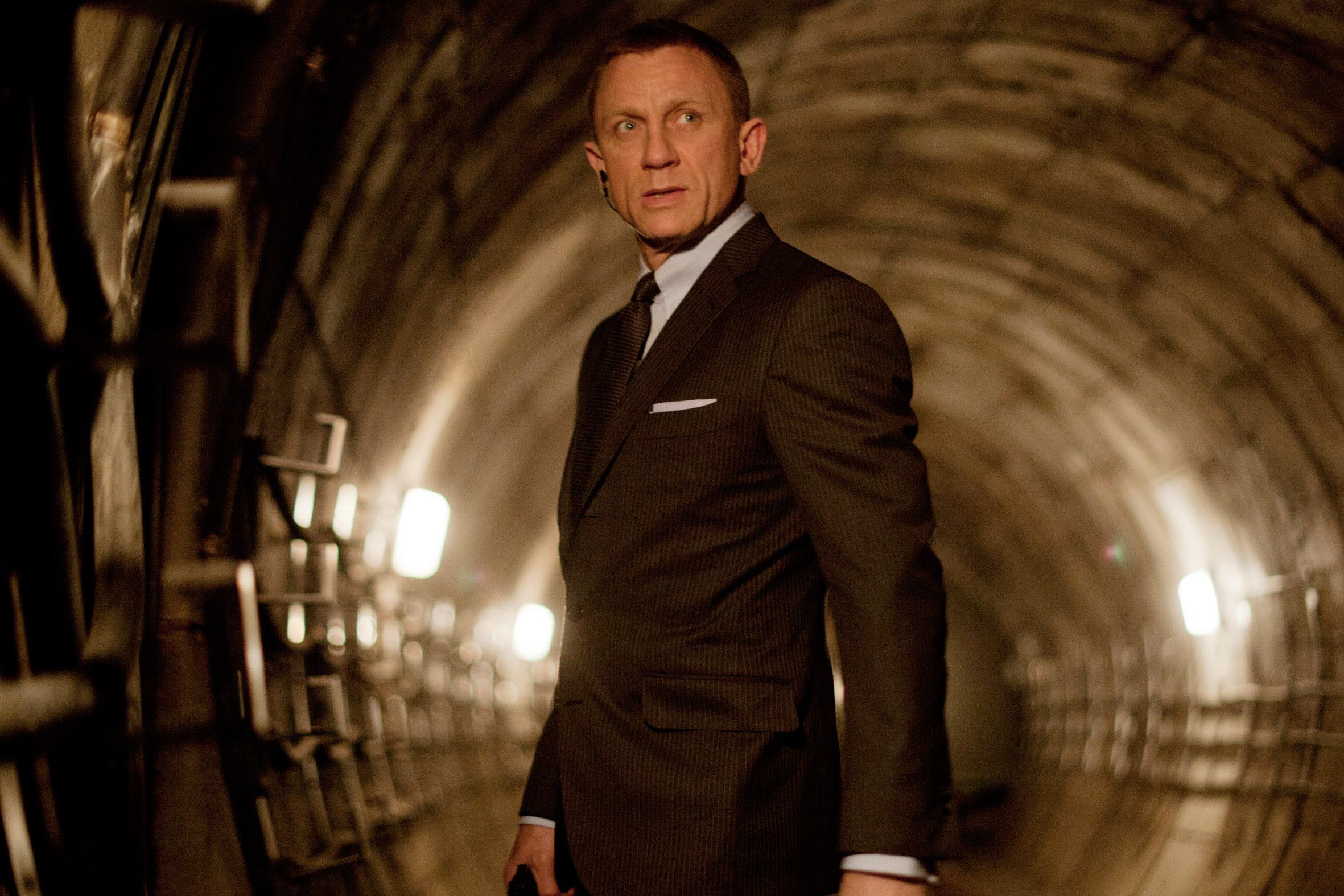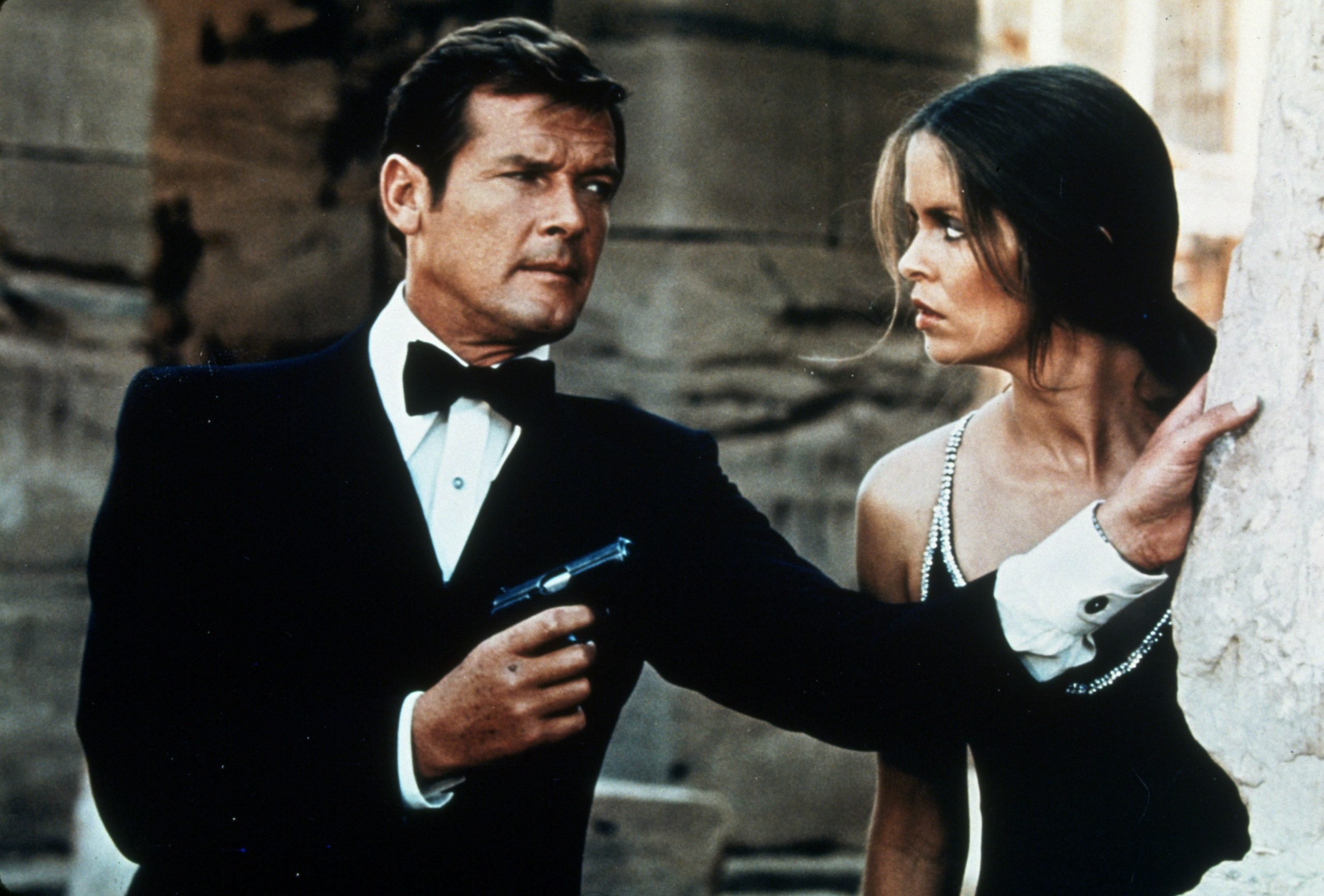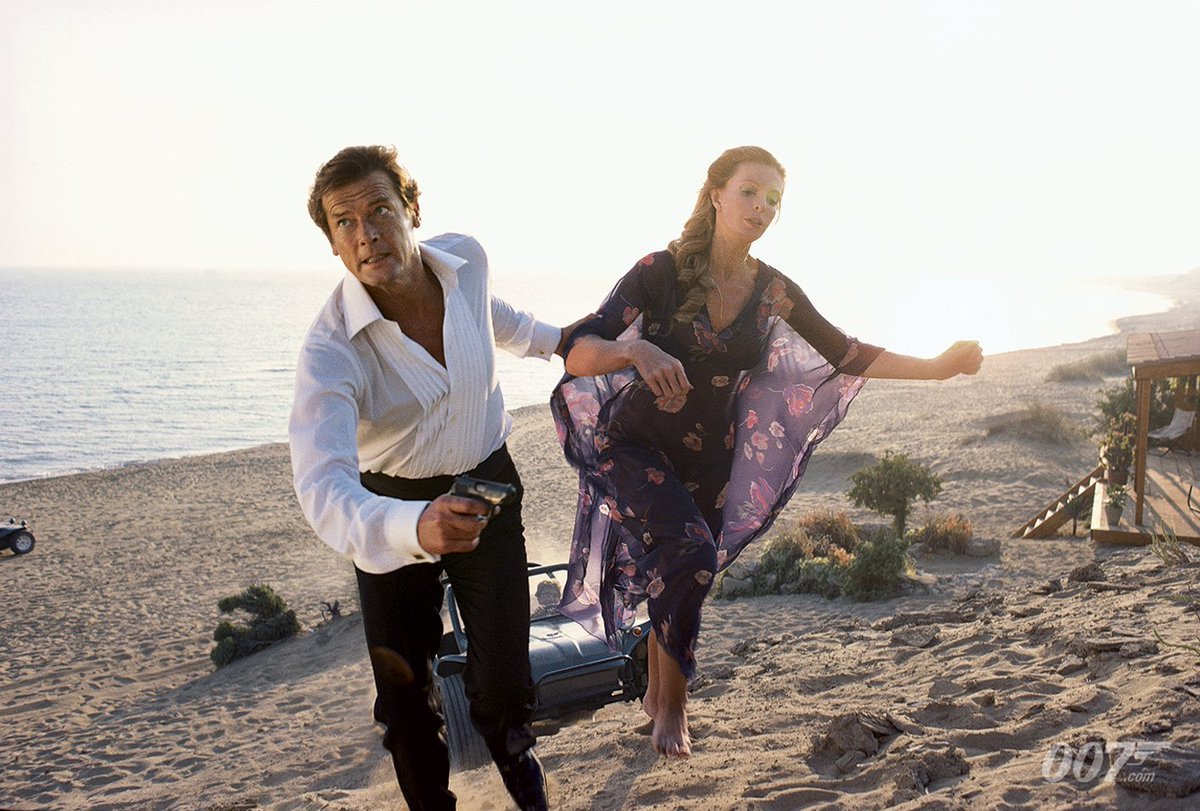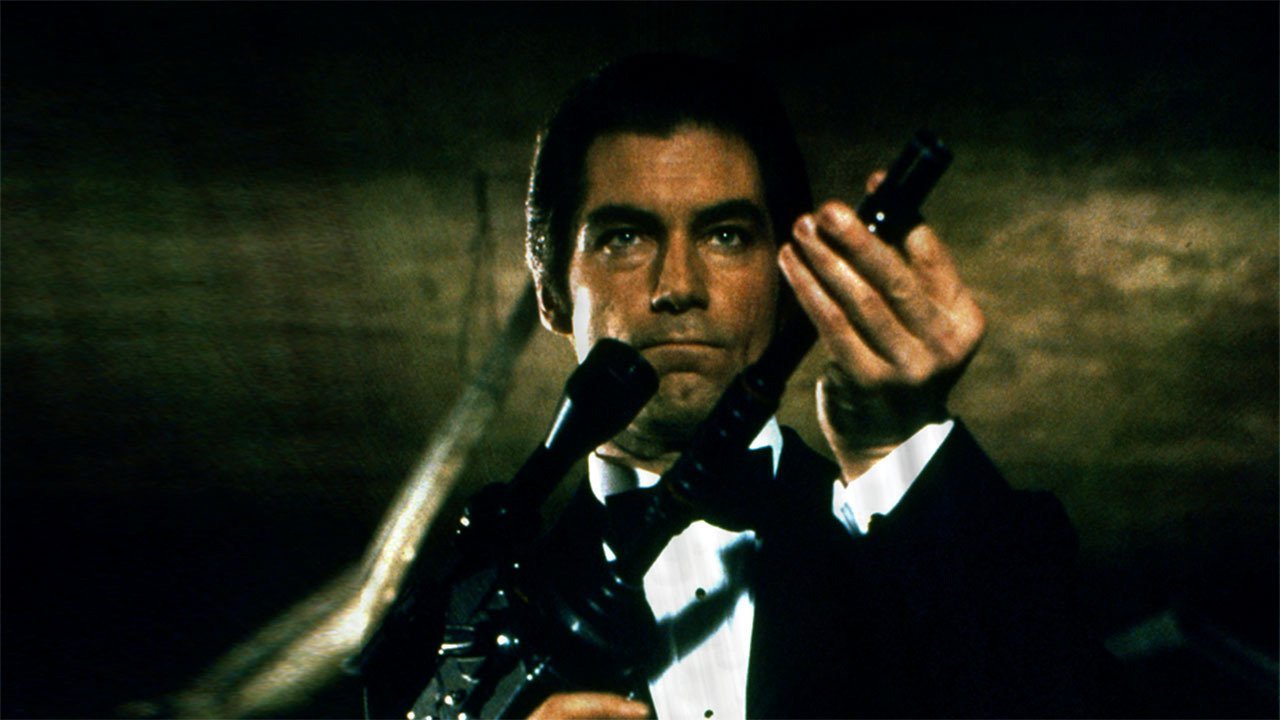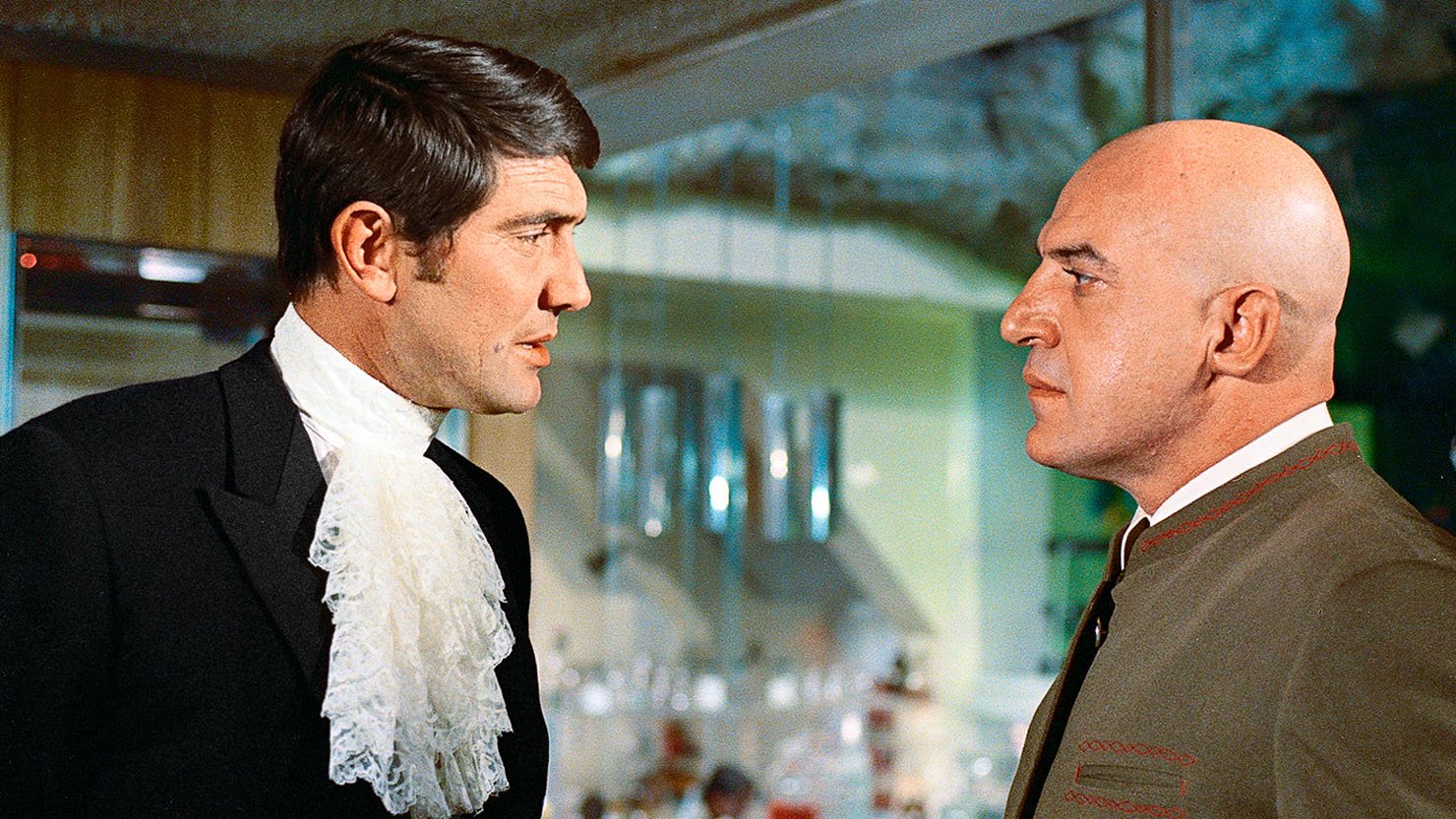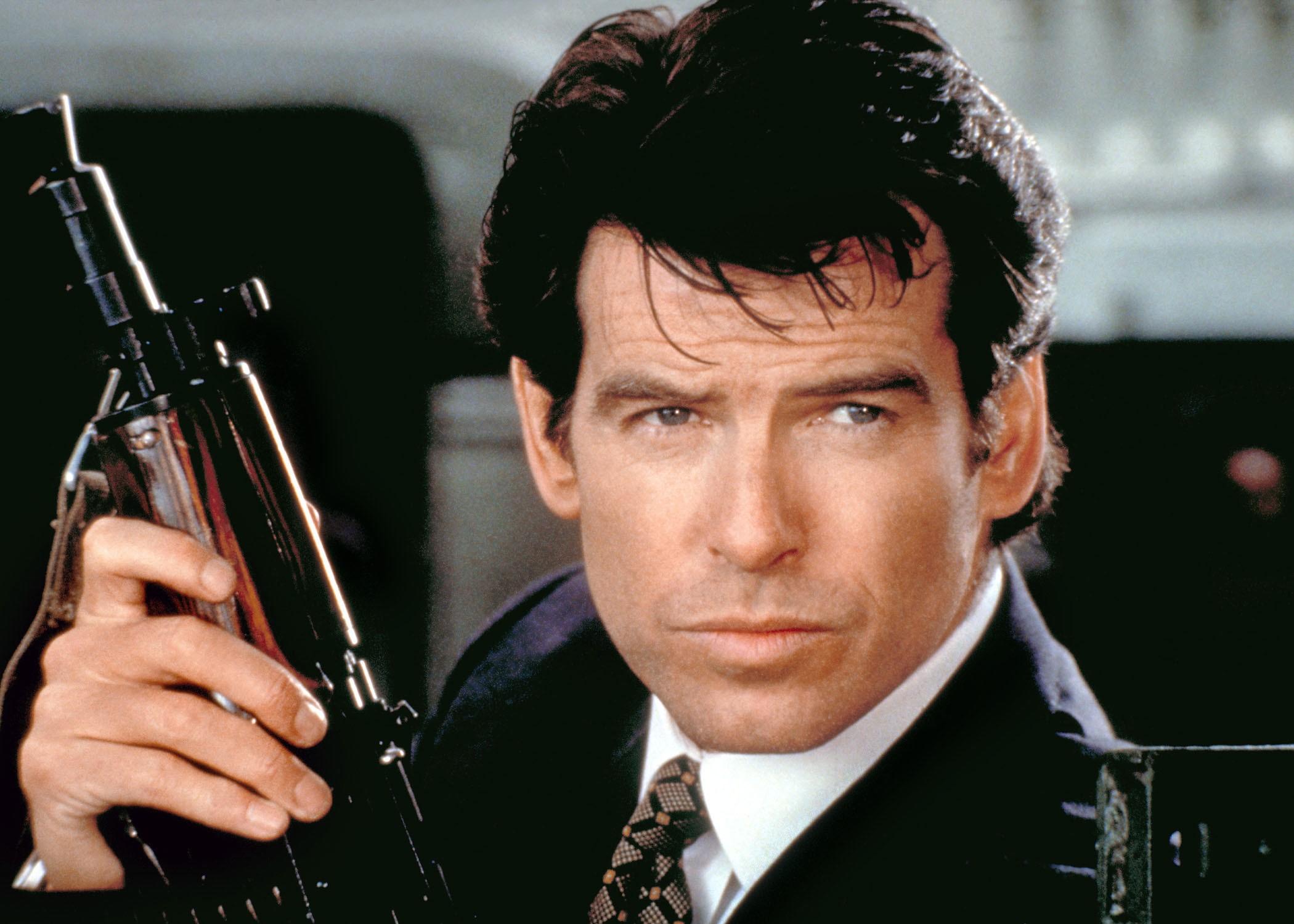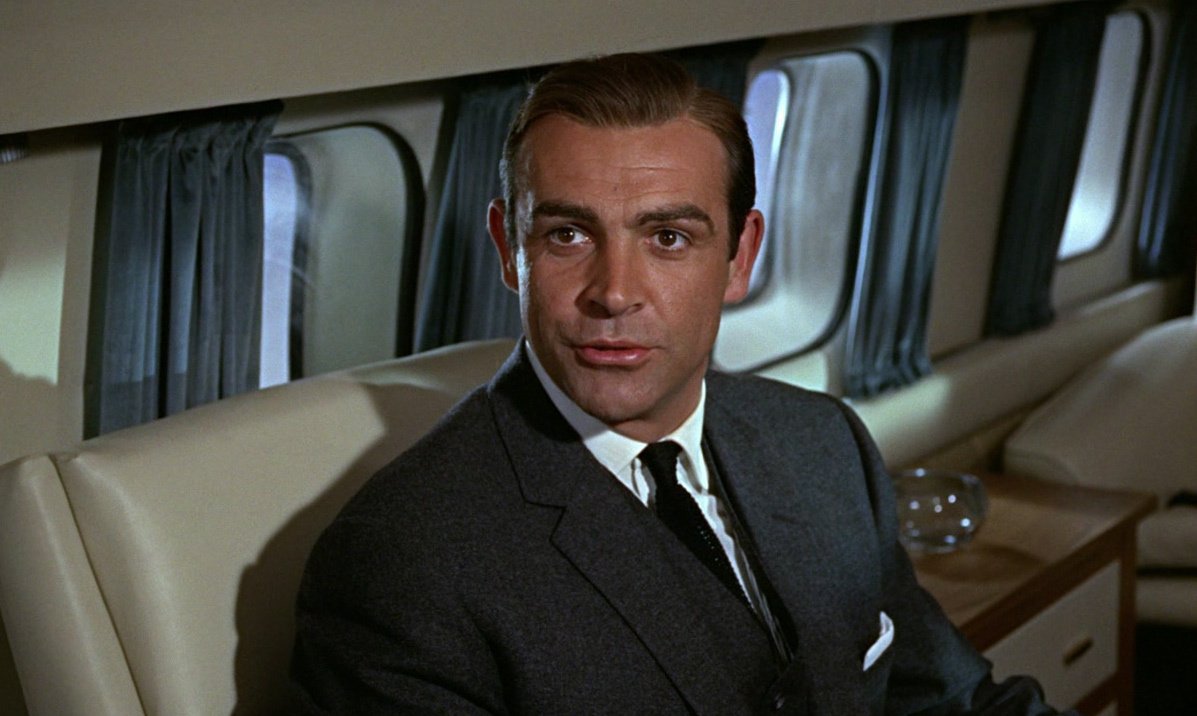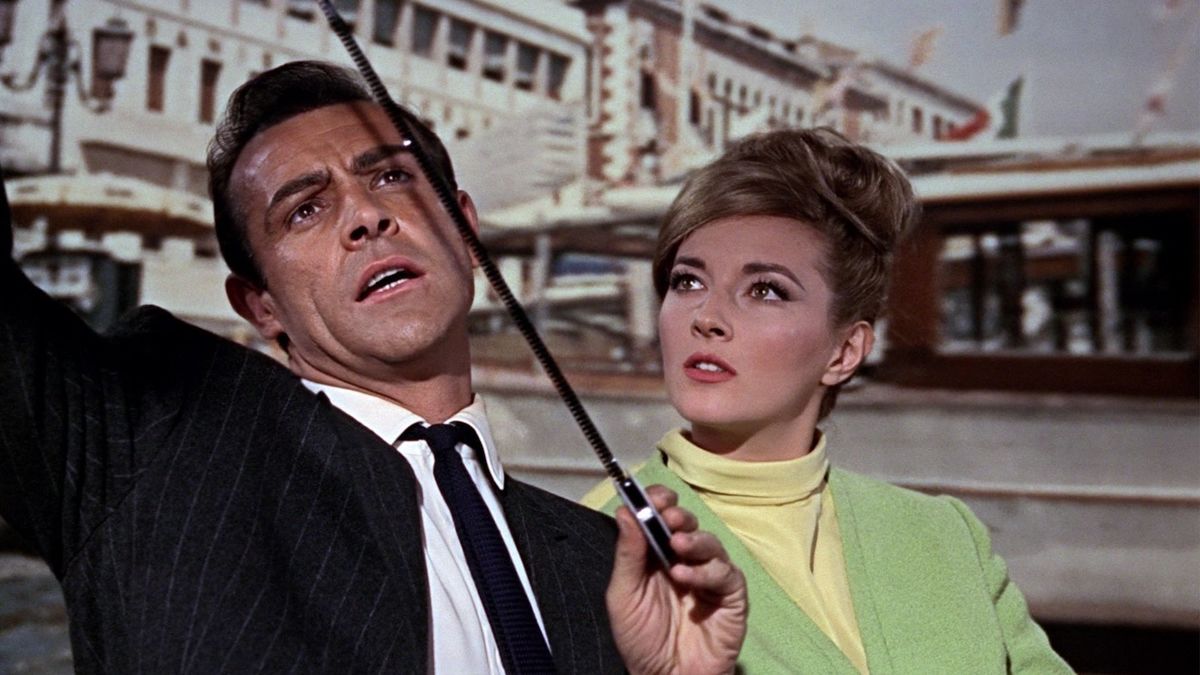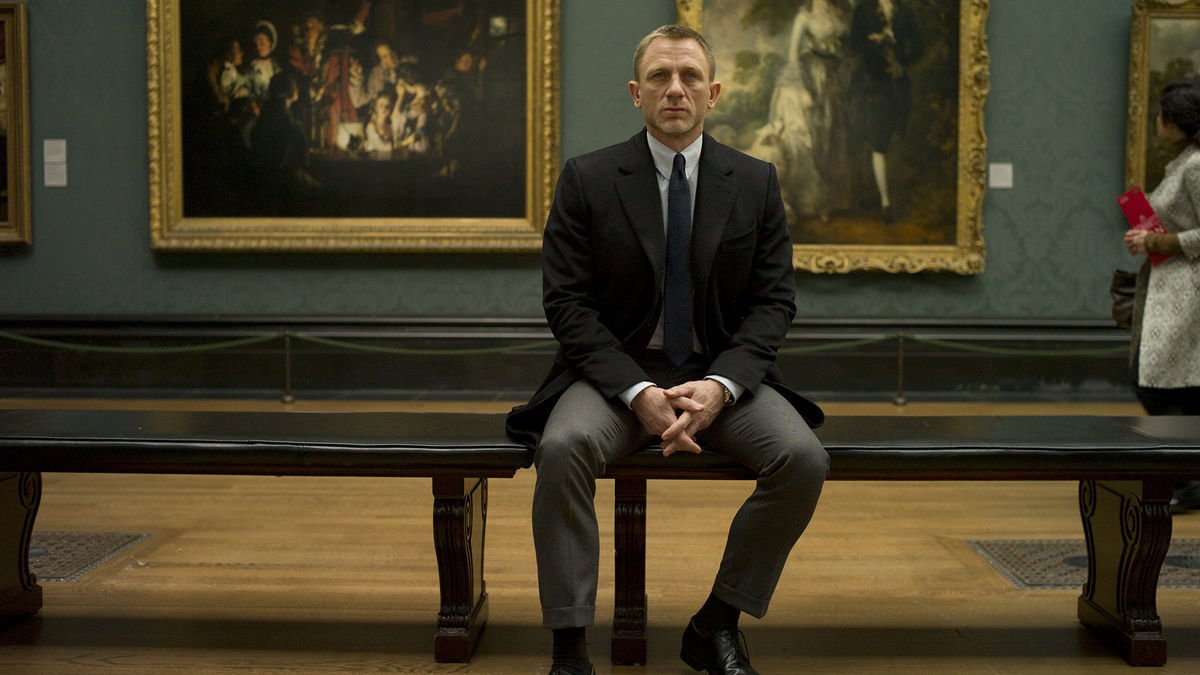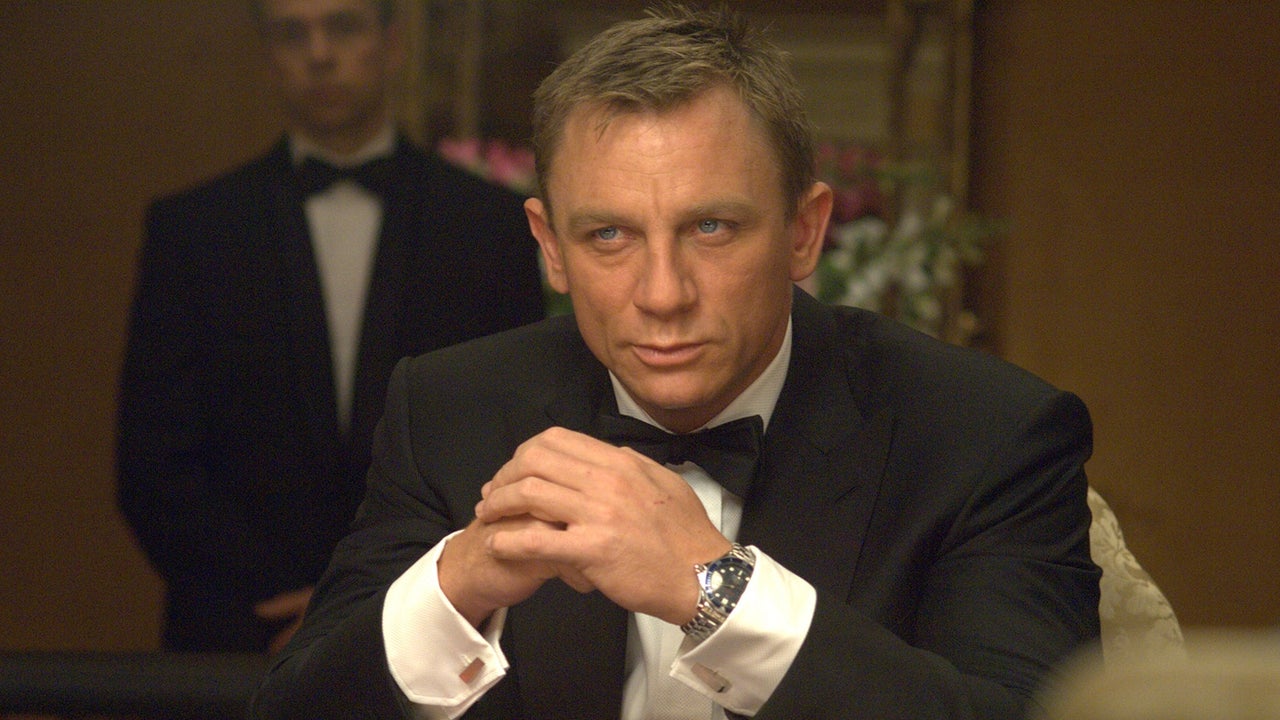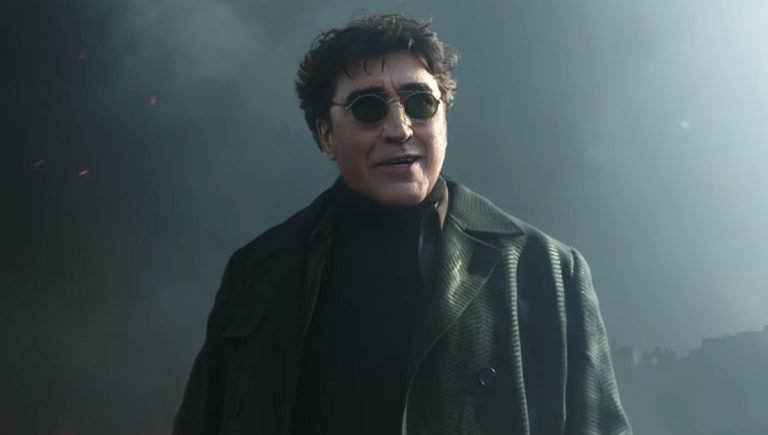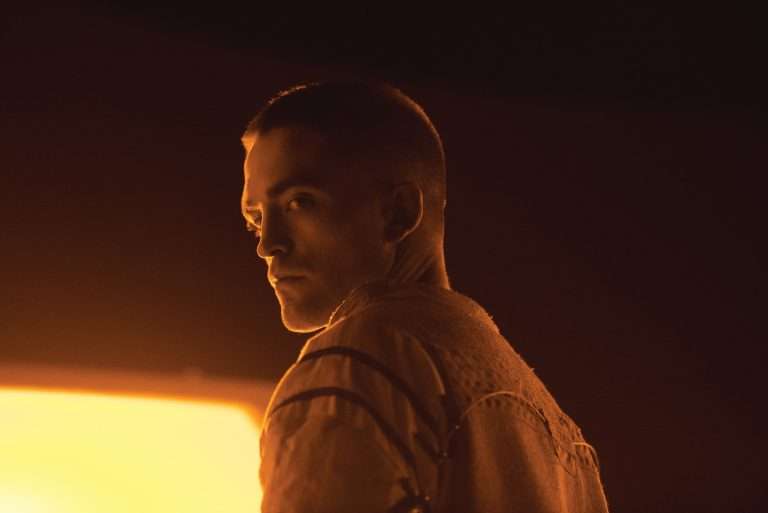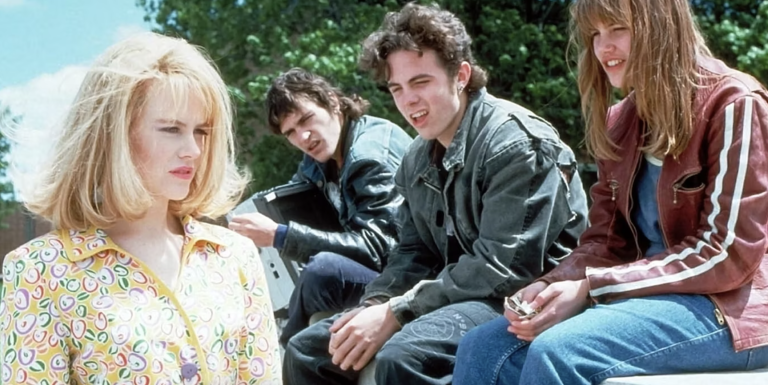On 30th September 2021, the 28th film in the James Bond Movies Franchise, No Time To Die, finally comes out in theatres. It is the fifth film starring Daniel Craig, and it is poised to conclude the story which had started with 2006’s Casino Royale.
The James Bond franchise has been around for almost 50 years by this point. The initial movies made in the 60s were hugely influential in raising the spy genre of films as well as giving us different knockoffs and spoofs like Danger Diabolik, the Austin Powers films, etc. For a franchise to stay relevant and even a viable one, with such a strong and loyal fanbase, it depends a lot on foresight by the creators of the franchise. Albert R. Broccoli and Harry Saltzman, and later Broccoli himself knew when to change with the times, how to be flexible. As a result, each of the JamesBond movies feels fine-tuned to a formula, but the tone changes depending on the decades as well as the Bond who is playing them.
If you are a fan of the spy genre, I would recommend checking out all of them. They are fun movies to watch, each one entertaining in their own right, and while there are a couple of them which just veer too far (Die Another Day, A View to a Kill), those firmly land on the camp of it’s so bad, it is good.
Before I start with the top 10, a disclaimer – these are ultimately my opinions, not gospel truth. Since the Bond franchise has a varied fan base, depending upon the James Bond actor they had grown up watching, their measure of ranking these movies might be different.
Also before I start with the top 10, there are two honorable mentions which barely made the cut. I had a hard time cutting them out, but I do want to talk about them – so here they are –
Honorable Mentions:
Dr. No (1963)
The one that started it all, this Terence Young-directed joint introduced most of the staples of the Bond franchise – the Bond Girls, the exotic location, the campy villain with a hidden lair. Dr. No also introduced us to Sean Connery’s Bond, a suave English agent who does all his womanizing and violent antics for Queen and Country.
Connery’s Bond was the staple for Bond for at least 5 years straight, and there is no denying that he might be the best Bond, 50 years from now. Dr. No also introduced us to the famous Monty Norman score, the Bond theme, which later becomes immortalized by the John Barry orchestra in the subsequent films. But the Bond formula would get crystallized in spurts, starting in From Russia With Love, and then finally getting the formula right in Goldfinger. As a movie, Dr. No is a fun movie to watch, if not as good as some of the later entries.
The Living Daylights (1987)
The first of 2 movies where James Bond was played by Timothy Dalton. The Living Daylights comes in the wake of the Roger Moore era of campy silly Bond movies and is a return to the roots of the character. The action set-pieces are less elaborate and more practical, Dalton’s Bond is very much inspired by the Ian Fleming books plus he also reminds you of Connery Bond in terms of ruthlessness.
The story too aims to bring back to the espionage heavy Cold War-era tone. The problems lie with its antagonists. Joe Don Baker as Whittaker as well as Jeroen Krabbe as Koskov seems as if they belong in a different era of the Bond films, in the case of Krabbe definitely. Whittaker as an antagonist is simply isn’t menacing. However that worn down aesthetic and cinematography, the story’s dedication to keeping it as realistic as possible makes this movie a definite return to basics.
Now that the honorable mentions are out of the way, here are 10 Best 10 James Bond Movies, Ranked:
10. Spectre (2015)
The latest of the Bond films, and the second one directed by Sam Mendes, Spectre is also the fourth outing of Daniel Craig as James Bond, and it is also one of its most ambitious entries. The Daniel Craig Bond movies have definitely skewered towards maintaining their grip on reality so far. Spectre tries to combine all the aspects of the long-running franchise, its realistic nature, with its comic book lite villains as well as trying to connect all the Craig era Bond films from 2006 in line with a single continuity.
This results in a bloated movie with serious pacing issues, a central villain who does feel underwhelming at times. But if you are a Bond fan who has been following the franchise from the beginning, the feeling of seeing the villainous base in a crater shaped like a volcano, or embracing its world domination plots is one you become used to seeing as you are traversing with the franchise.
Yes, the subplot of MI6 being taken over by a rival organization bears striking similarity with a subplot in the 5th Mission Impossible film, but this isn’t the first time that the James Bond franchise not only has inspired other similar franchises but also is inspired by similar franchises. Storytelling is cyclical, inspired by and inspiring too in equal measure, and it still doesn’t change the fact that Craig as Bond is still spectacular; his intensity and screen presence defines this film. While not as well-paced as Skyfall, Spectre still is a pretty satisfying watch for Bond fans.
Related to James Bond Movies – Spectre [2015]: Neither Shaken nor Stirred
9. The Spy Who Loved Me (1977)
When The James bond franchise entered the 70s, the reliance on gadgets as well as a campy tone followed it, especially from Diamonds are Forever (1971). With Roger Moore’s outing as Bond from Live and Let Die (1973), Moore established himself as a Bond who is very distinctly English, suave, sexy, able to deliver one-liners as well as punches.
The Spy Who Loved Me is also very much the Moore Era Bond facing off against a supervillain-like threat in Karl Stromberg, a man with flippers for hands who wants human civilization to evolve underwater; but there is still the touch of the submarine, cold war Era thriller.
Moore’s Bond in this movie at some points is quite ruthless, having no compunctions in letting a villain fall from the roof. While not as brutal as Connery, his ruthlessness shines through. His chemistry with Barbara Bach’s Agent Triple X is a highlight, especially their antagonistic but flirty relationship in the first half. But you can see Gilbert and the screenwriters leaning on the camp more and more as the movie progresses, which is fascinating. The Lotus automobile which doubles as a submarine is also emblematic of the change in tone of the second act.
The Spy Who Loved Me however is the most successful and well known among the Roger Moore era Bond precisely because of its balance between a spy thriller and comic book storytelling plot-wise. Its positives make you forget that The Spy Who Loved Me is essentially a remake of You Only Live Twice, coincidentally another Lewis Gilbert joint starring Connery that time. But hey, it worked and still does, because of Moore’s charm and charisma.
8. For Your Eyes Only (1981)
As part of the Roger Moore Canon of Bond, this is the most serious of them. The writers decided to go back to the roots of the franchise and make a more cold war based thriller, making him less reliable on gadgets. The plot itself is simplistic to the point of being boring in parts. But there are stunt works that are just perfectly pleasing at some points, and jaw-dropping at others.
For Your Eyes only also manages to stand out because of the emotional arcs of its characters. Melina Havelock, played wonderfully by Carole Bocquet, is a Bond Girl who is hell-bent on revenge against the man who killed her parents. Her interactions with Bond, with Bond warning her about digging two graves, feel poignant knowing Bond’s history.
The movie does feel at war with its campy instincts in the beginning, but it embraces the serious roots as it progresses. Moore however is starting to show his age, but the way the writers use Bibi Dahl as a Bond girl who is attracted to him, and Bond actually feeling uncomfortable as to that prospect, feels very much like a subversion of the traditional Bond formula. While normatively it is simplistic, its reliance on a realistic gritty approach makes For Your Eyes Only stand out. This is a highly underrated Bond movie, and definitely a vanguard for a change in the approach of the storytelling as Bond enters the 1980s.
7. Licence to Kill (1989)
The second of the James Bond movies starring Timothy Dalton is also the least talked about and also some of the least liked by Bond purists, primarily because Bond doesn’t feel like the suave calm agent we have come to know him. Licence to Kill is a different James bond movie because of its tendency to completely lean into the darker edge of Bond’s character.
The movie itself goes significantly darker in terms of the violence and supporting character getting half-eaten by a shark. Bond movies so far have been a pretty bloodless affair, so seeing the violence depicted on screen is a welcome addition. The fact that almost all of the gentlemanly characteristics are stripped bare from Bond, works in raising the stakes.
He is much more of a raw nerve here, prone to acting on emotions which isn’t a usual take. But it also works because this is Dalton’s version of Bond and you believe that this Bond can be such a brooding bastard. The action set-pieces are realistic to a point, the fact that Bond essentially fights a South American drug cartel boss brings the movie’s tendency to indulge in camp excess into something resembling far more of an 80s excess; reminding you of an episode of Miami vice.
Robert Davi as Sanchez is menacing and charismatic, while Del Toro’s sneering henchman does bring that 80s camp. Also, the decision to use Q as a field operative than just the gadget exposition machine is another welcome change to a franchise running for more than 20 years at that point. Carey Lowell as Pam Bouvier is another capable and spunky Bond woman but it seemed the writers didn’t know what to do with her character.
Talisa Soto’s Lupe however is a completely unnecessary character. The writers’ tendency to indulge in unnecessary exoticism makes the story drag in parts, while a subplot about a religious cult as a front for Sanchez’s drug business goes nowhere. Flaws in the script notwithstanding, it’s the direction by Glen, the drastic change in tone, and the acting by Dalton which elevates this movie from a traditional James Bond fare. You wouldn’t be wrong in noticing similarities between Dalton and Craig’s approach to the character.
6. On Her Majesty’s Secret Service (1969)
In an alternate universe, Sean Connery doesn’t leave the franchise after You Only Live Twice, and appears in this film, and the movie becomes one of the best of his oeuvre. As it stands if Connery had appeared in this film, we wouldn’t have had Diana Rigg as Tracy, one of the best Bond girls, the true love of James Bond’s life; we wouldn’t have a Bond who is far more physically fit than Connery at that time, and also far more open to doing such stunts which Peter Hunt portrays in the film to bedazzling effect.
The story of On Her Majesty’s Secret Service is definitely different. George Lazenby’s Bond is no Connery but his stone-cold features give Bond a sense of unapproachable charisma. The story of On Her Majesty’s Secret service is so strong and the primary characters are so well written that it sidesteps the issues.
The directorial debut of Peter Hunt, the previous second unit director and editor of the franchise is depicted by a frantic flow of energy; he goes untamed on this one. The film looks its most stunning yet, with colors you can’t help but notice. The director of photography Michael Reed, who stunned the world with his lavish Hammer films, brings that same sensibility to this film. But what Hunt also manages to capture is the romantic undercurrent which slowly comes to the forefront.
Bond’s brooding and aggressive demeanor are slowly softened as he comes face to face to heart with Tracy, and it feels believable, which is why when the ending happens, it is heartbreaking. It is gutsy and it has reverberations that are felt throughout the franchise going forward. Underrated then, it has now come to be regarded as one of the best movies of this franchise, for good reason.
5. Goldeneye (1995)
The first of the Martin Campbell movies in this franchise, interestingly Martin Campbell directed Bond movies are always rebooted in a way. Goldeneye serves as a soft reboot, bringing Bond into the 90s. Pierce Brosnan’s James Bond feels like an amalgamation of Sean Connery and Roger Moore-era Bond in the best way possible. It is also deconstructing Bond in a far more overt way, his drinking and womanizing are character flaws. The fact that he is a relic from the cold war is actively stated in the film, while him risking his life as well as bedding women for “Queen and Country”, which was stated almost proudly by Bond in Thunderball, is now a legitimate question.
The presence of two capable women; one being the antagonistic Xenia Onatopp (Famke Jansen), who literally gets off on killing women. The other being Natalya Simonova played by the very fetching Isabella Scorupio. She is tough and resourceful, and not easily impressed with Bond. Even Moneypenny is no longer some woman simply there to make puppy dog eyes at Bond. To round the whole thing out M is now a woman (Judi Dench) who won’t hesitate to berate Bond if necessary.
Goldeneye thus manages to deconstruct as well as update the franchise in a way that doesn’t feel forced. The action set-pieces are frenetic, Campbell is a master at juggling these set-pieces and tones and making it look so effortless. And Brosnan is perfect as Bond, almost like Timothy Dalton or Sean Connery’s Bond set in the world of Roger Moore, and it surprisingly works. The frenetic pacing and energy of the film ensure that even at 2 hours long, the movie doesn’t drag. It’s just too bad that none of the subsequent films starring Brosnan manages to hold a candle to this one.
4. Goldfinger (1964)
This is the movie that made the franchise iconic. Goldfinger directed by Guy Hamilton is the one which finally crystallizes the template which every subsequent Bond film starts to follow – a pre-credit sequence not entirely related to the main plot, an original song made for the film’s credits by an iconic or popular artist and used as a motif throughout the film. The Aston Martin with all the crazy cool gadgets designed by the brilliant Q. An iconic villain with an equally dangerous sidekick. The memorable Bond Girls.
The film bets on bigger and more spectacle than the last film and it succeeds. By introducing the laser beam which threatens to cut Bond’s privates, to introducing a dangerous villain with an equally ridiculous and dangerous sidekick. But it really works because of Connery, who coasts throughout this movie with his charm disguising the brutality underneath. Connery’s Bond is really a brute disguised in a Saville Row suit, and while that differs in some ways from Fleming’s original creation, it gives a sense of menace and differentiates it from the book version of Bond.
However, from the filter of the misogynistic dark ages, Goldfinger is troubling at some points, especially his seduction of Pussy Galore in the second act. Yes, the naming is bad, yes the villain’s name is Auric Goldfinger, the Bond franchise has a bad history with naming characters. The Connery movies as well as the Moore movies to an extent would be faced with a searing outcry and sexism, and even racism in You Only Live Twice.
All that is to say, there is a reason why Goldfinger is such a famous movie of the franchise. It sets up the formula which all subsequent movies will follow. It also has some iconic imagery, like Jill Masterson’s dead body painted in gold, lying on the bed; it introduces the iconic Aston Martin with the gadgets, it has a villain who is definitely menacing and yet smart and a secondary protagonist Bond Girl who is actually capable and strong. And finally, it is an enjoyable movie to watch, acknowledging its flaws and all.
3. From Russia With Love (1963)
The second movie in the franchise is squarely in the middle. It is definitely a step up from its predecessor, more confident, more leaning into its spy roots, while it doesn’t lean too far on the gadgetry and megalomaniacal villains its successor will introduce. And somehow the fact that this at its core is the most espionage-heavy and thrilling spy movie makes it one of the best.
It shouldn’t be surprising considering that it is adapted from the best novel of the Bond series written by Ian Fleming. And while the villainous organization SPECTRE is still present, the overall film is more dependent on spy games, one group outfoxing the other, culminating in Bond fighting Red Grant in a train carriage, in one of the superb action sequences in recent memory.
From Russia with Love is a movie with a refreshingly intelligent script, free of the gimmickry that later Bond films would come to deploy and rely upon. Bond and Romanova are played like real people by Connery and Bianchi, their chemistry is believable. It is highly convoluted and sometimes illogical like some spy films, but it is positively Hitchcockian, almost definitely hearkening back to Le Carre, but most importantly this is the most aligned as both the book and the movie has the same tone and story, and for that reason alone it deserves such a high spot.
2. Skyfall (2012)
Skyfall stands out as one of the unique James Bond movies in an already unique era of the Bond franchise – the Daniel Craig era. For one, it is very standalone, the writers taking the decision to forego the plot of the dastardly organization Quantum, in favor of crafting a singular weapon who is an ex-agent and similar to James Bond in many respects.
Most importantly Skyfall builds up MI6 for the modern era, introduces and fleshes out the supporting cast for this Bond, while also paying homage to what came before. There was a legitimate reason for that, as the Bond franchise was celebrating its 50th year anniversary, so a look to the past could be forgiven if done tastefully, and Director Mendes and screenwriters Purvis, Wade, and John Logan manage to look into the past both in the macro and micro level.
Bond is older, hurt, dealing with the question as to whether he is the right agent for the job, and this question is asked by the primary villain himself, played by a scene-stealing Javier Bardem. The movie also looks into the past and deals with the obsolescence of the Secret Service, and the OO section. It is brilliantly done, even though from an idea standpoint it is a remake of Goldeneye, but as we proved before when it works, it works. And Skyfall definitely works.
In the hands of Sam Mendes, Skyfall propels the narrative forward, pays homage to the past, while subverting the traditional formula of the Bond films fans have come to appreciate. “M” played by Judi Dench for the entirety of the Craig era until Skyfall, becomes the final Bond Girl; she is the catalyst and the main reason for the villain’s motivation, her motherly relationship with Bond as well as the almost oedipal obsession Silva has over her, is the emotional hook Skyfall takes to carry the story towards the finish line.
The cinematography by Roger Deakins, electronic heavy score by Thomas Newman, the fantastic acting by the new supporting cast, and as always a fantastic performance by Daniel Craig, sidesteps some of the plot holes Skyfall suffers from, ultimately creating one of the best James Bond movies, beaten only by one other.
1. Casino Royale (2006)
The hard reboot of the Bond franchise, a back to basics approach after the disastrous gimmick heavy Die Another Day, a new Bond which is less handsome and suave, more pugilistic and cold-blooded, a true assassin who is uncomfortable wearing a tuxedo and more comfortable in letting his fists and aim do the work.
Casino Royale had all of these as its features, but what makes this movie the best of the franchise, a near-perfect film, is its story and its well-developed characters. Neal Purvis and Robert Wade, with a rewrite by Paul Haggis, craft a movie which is a crackerjack of a thriller, a complicated plot which isn’t convoluted, which serves to show Bond’s first mission as a 00 agent, his origin from the cold-blooded killer to the suave secret agent we know Bond to be, while we see him falling in love for the first time as well.
The events of the book don’t begin until almost an hour and ten minutes in. The movie doesn’t begin to utilize the Bond tropes of M explaining Bond’s mission until around 50 mins. That shows some serious level of confidence in the first act which is all but set up, considering the casino doesn’t enter until the beginning of the 2nd act.
The action set-pieces, with the free-running sequence, the hand-to-hand combat, and the overall nature of the violence show director Campbell’s focus in creating a narrative far more grounded in reality, giving a far more gritty look at James Bond as a character and his world.
But one of the biggest accomplishments Campbell and the movie Casino Royale is successful in is crafting the entire Poker sequence as a suspense heavy thrilling part of the second act, ensuring that any audience member could feel the tension, elation, and distress faced by Bond and Le Chiffre as they both try to outfox each other by reading each other from across the table.
Like Bond says in the film, you don’t play the cards, you play the player across from you, Campbell does exactly that, focusing on the primary protagonist to convey the narrative progression, and it is brilliant work, in an already brilliant movie.
One of the many reasons why Casino Royale is not only one of the best James Bond movies, but also one of the best action movies of the last decade. It is also one of the best origin stories for a character who has survived in the public consciousness for the last 50 years, and is going to survive even now, and maybe in the future as well. Time will tell.

